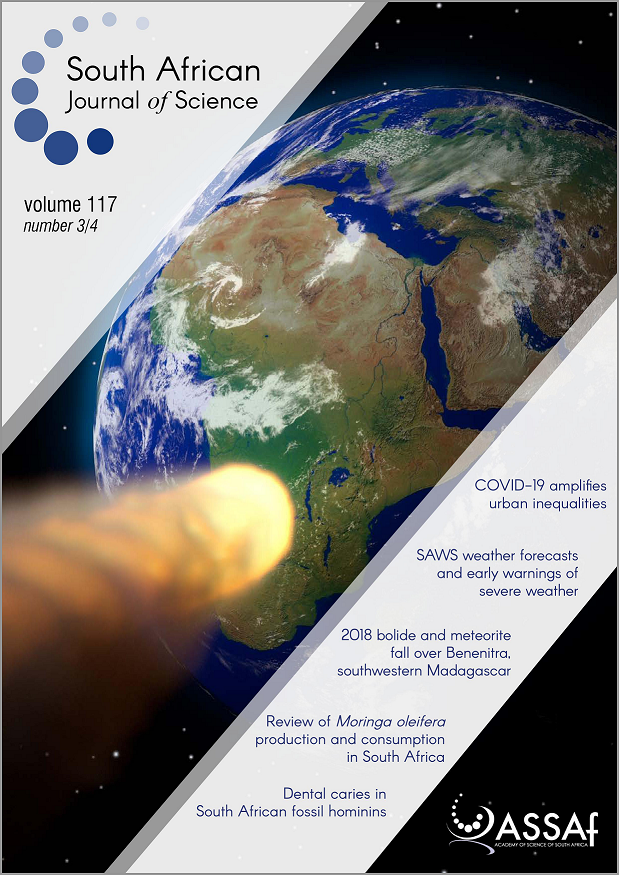Moringa oleifera in South Africa: A review on its production, growing conditions and consumption as a food source
DOI:
https://doi.org/10.17159/sajs.2021/8689Keywords:
acceptability, cultivation practices, moringa, nutrition, production areasAbstract
Moringa oleifera (moringa) trees excel mainly in tropical and sub-tropical regions and are known to thrive in a wide range of soil types. The recent rise in moringa production in various agro-ecological zones of South Africa could be attributed to its multiple benefits, including nutritional and medicinal properties. Since its introduction as a cultivated crop, there has been a growing interest from farmers, researchers and government on various aspects of the tree such as its morphology, chemistry, growing conditions, production, processing and utilisation. We reviewed the work done on moringa within the South African context in terms of production, growing conditions and cultivation practices. The involvement of government departments on moringa-oriented activities and its consumption as food were also reviewed. In addition, gaps were outlined on its utilisation that need to be addressed, and recommendations provided on what could be done to ensure successful production of moringa in South Africa.
Significance:
- This review highlights moringa research that has been done on growing conditions, production and human consumption in South Africa.
- The review further addresses the potential commercialisation of moringa and existing knowledge gaps.
Published
Issue
Section
License

All articles are published under a Creative Commons Attribution 4.0 International Licence
Copyright is retained by the authors. Readers are welcome to reproduce, share and adapt the content without permission provided the source is attributed.
Disclaimer: The publisher and editors accept no responsibility for statements made by the authors
How to Cite
- Abstract 1664
- PDF 1334
- EPUB 152
- XML 183
Metrics
Funding data
-
National Research Foundation
Grant numbers 102196












.png)